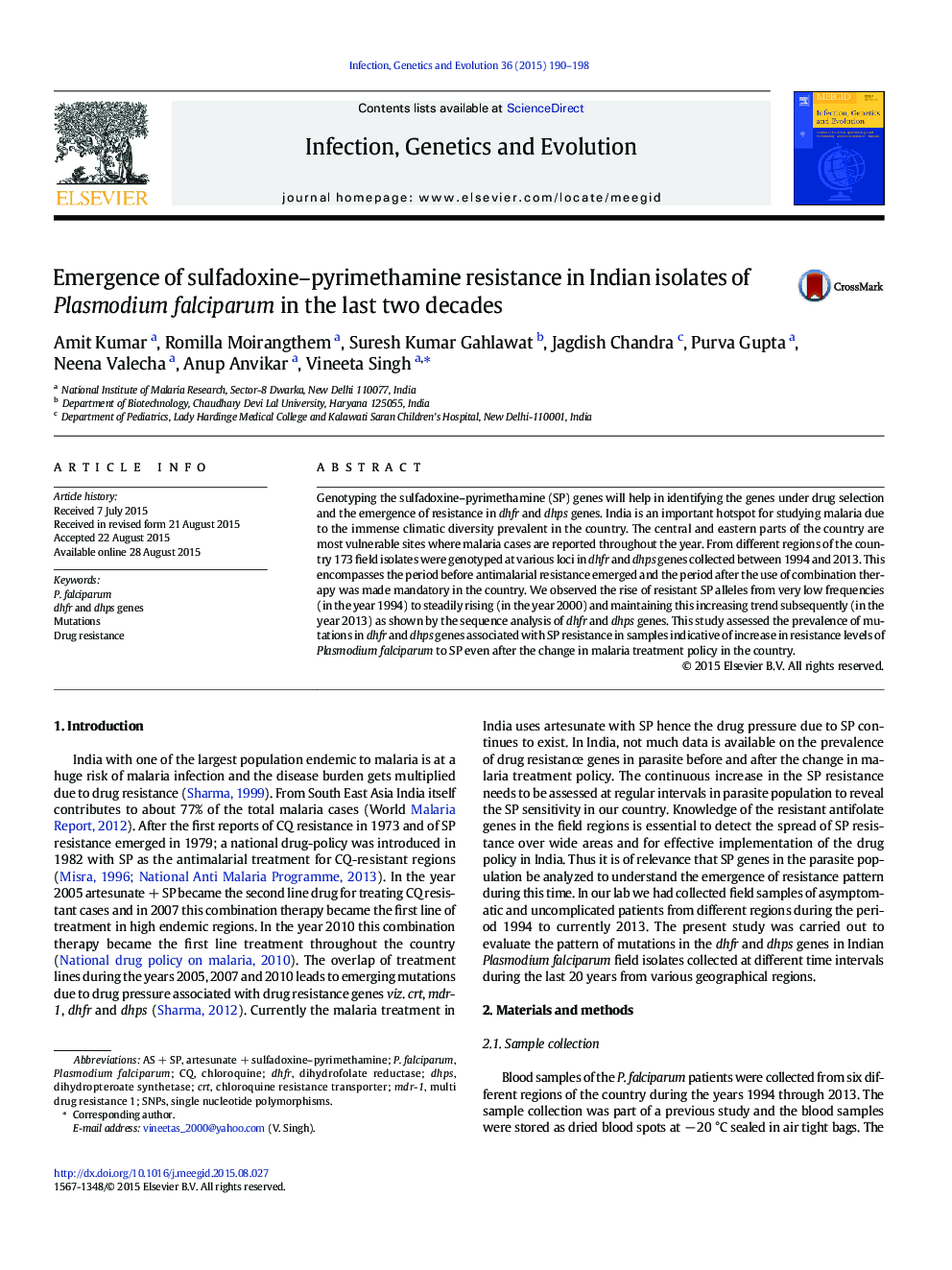| Article ID | Journal | Published Year | Pages | File Type |
|---|---|---|---|---|
| 5908550 | Infection, Genetics and Evolution | 2015 | 9 Pages |
â¢We genotyped 173 field isolates at various loci in dhfr and dhps genes collected between 1994 and 2013 from six diferent regions in India.â¢We observed rise of resistant SP alleles from very low frequencies in the early years to steadily rising and maintaining this increasing trend subsequently as shown by the sequence analysis of dhfr and dhps genes.
Genotyping the sulfadoxine-pyrimethamine (SP) genes will help in identifying the genes under drug selection and the emergence of resistance in dhfr and dhps genes. India is an important hotspot for studying malaria due to the immense climatic diversity prevalent in the country. The central and eastern parts of the country are most vulnerable sites where malaria cases are reported throughout the year. From different regions of the country 173 field isolates were genotyped at various loci in dhfr and dhps genes collected between 1994 and 2013. This encompasses the period before antimalarial resistance emerged and the period after the use of combination therapy was made mandatory in the country. We observed the rise of resistant SP alleles from very low frequencies (in the year 1994) to steadily rising (in the year 2000) and maintaining this increasing trend subsequently (in the year 2013) as shown by the sequence analysis of dhfr and dhps genes. This study assessed the prevalence of mutations in dhfr and dhps genes associated with SP resistance in samples indicative of increase in resistance levels of Plasmodium falciparum to SP even after the change in malaria treatment policy in the country.
